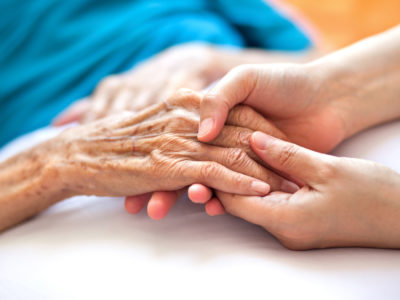Behavioral Care
Stats say 920 out of 100,000 come into a hospital and need a Psych evaluation, or 2 to 3 per day. Average stay is 8-10 days. We will build 16 beds (more if necessary). Approximately 20% of inmates in jails and 15% of inmates in state prisons are now estimated to have a serious mental illness [383,000 individuals, nearly 10 times the number of patients remaining in the nation’s state hospitals]
We will offer therapy options, medication, hospital space, temporary housing within communities, and meeting space for support groups and peer support. ‘Mental Health America’ wants to be present in communities and identify and treat mental illness “before stage 4”, implying “when it is too late”.
Stage 1 – first begin to experience symptoms such as loss of sleep, feeling tired for no reason, feeling low, feeling anxious, hearing voices, etc.
*Stage 2 – we need to identify this
*Stage 3 – we need to identify this
Stage 4 – “imminent danger to self or others” (we are too late; by this point they will wind up in a hospital or a prison)
STRATEGY:
Entry Level: Everyone takes yearly screenings (part of mandatory physical), meets with a local counselor, who can refer individual to next “stage” if warranted
Stage 1: therapist, counseling, medication, Peer to peer community engagement, support groups, community work / service
Stage 2: Housing within community around medical treatment
Stage 3: Hospital within community [danger only to self]
Stage 4: Homeless Village / Rehabilitation Retreat or part of Prison System where only mentally ill are sent [means individual is unable to provide for basic needs: food, clothing, shelter, health or safety]…”also lacks capacity to make decisions about treatment, care, or supervision.”
TEMPORARY HOUSING OPTION [Emotional / Substance Abuse Clinic Housing] 34 a year out of 100,000 might need a place to stay to get back on their feet. 16 rooms could serve many functions: behavioral halfway house, prison halfway house, temporary emotional trauma, or homeless but transitioning back to society.
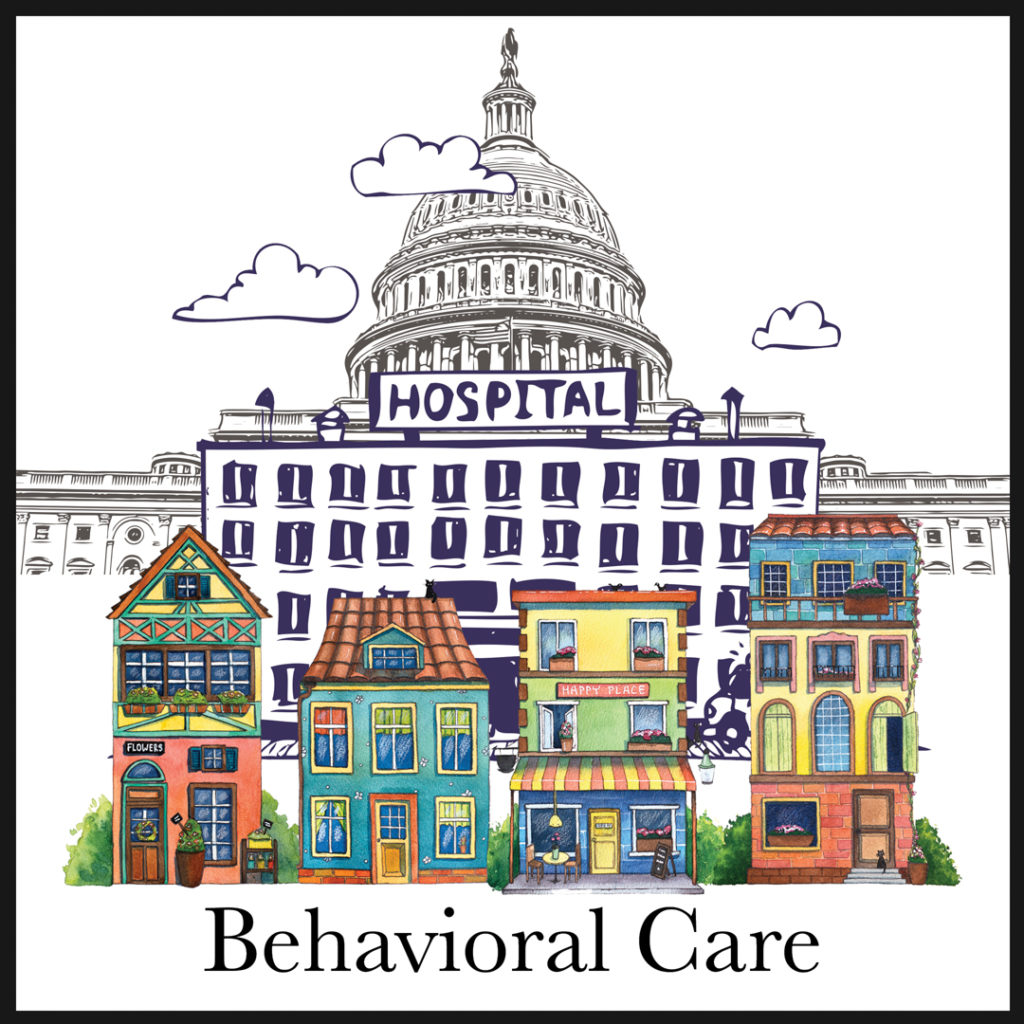
Behavioral Care Logistics
Infrastructure Loan Cost: $26.2 Billion covers the building of Behavioral Care in every Community. We will build 100 offices at the Behavioral Clinic location, capable of housing 4 Teams of 26 mental health specialists. [4 reception areas, 4 waiting rooms, 8 bathrooms, 4 conference rooms, etc = 22,000 square feet X $100 per sq. ft. = $2.2 million X 3271 locations = $7.2 Billion Loan
COSTS:
- Staffing and other operating costs are likely to be at least $3 million a year.
- 16,000 sq. ft. space @ $350 per sq. ft. = $5.6 Million (with other building costs, could go as high as $7.6 Million
INFRASTRUCTURE
Will make it $8 Million to build X 3,271 facilities = $26.17 Billion
STAFFING
going with their figures, $3 million to staff X 3,271 facilities = $9.82 Billion [The ratio at general medical and psychiatric wards is one nurse for up to six patients.]
TEMPORARY HOUSING OPTION [Emotional / Substance Abuse Clinic Housing]
- 34 a year out of 100,000 might need a place to stay to get back on their feet
- 16 rooms could serve many functions: behavioral halfway house, prison halfway house, temporary emotional trauma, homeless but transitioning back to society
- $60k per unit X 16 units = $960,000 X 3271 = $3.14 Billion
Inpatient Care
Used for scheduled inpatient procedures, or transfers from Urgent Care, Emergency Care, Memory Care, Behavioral Care, etc [Any facility where an overnight procedure or observation is necessary]
Stats say 3,363 to 4,341 out of 100,000 will need a procedure with an overnight stay every year (9-12 per day). We must allow for a 5-day average stay per patient, which implies 12 beds X 5 days per stay = 60 available beds in every 100,000 Community.
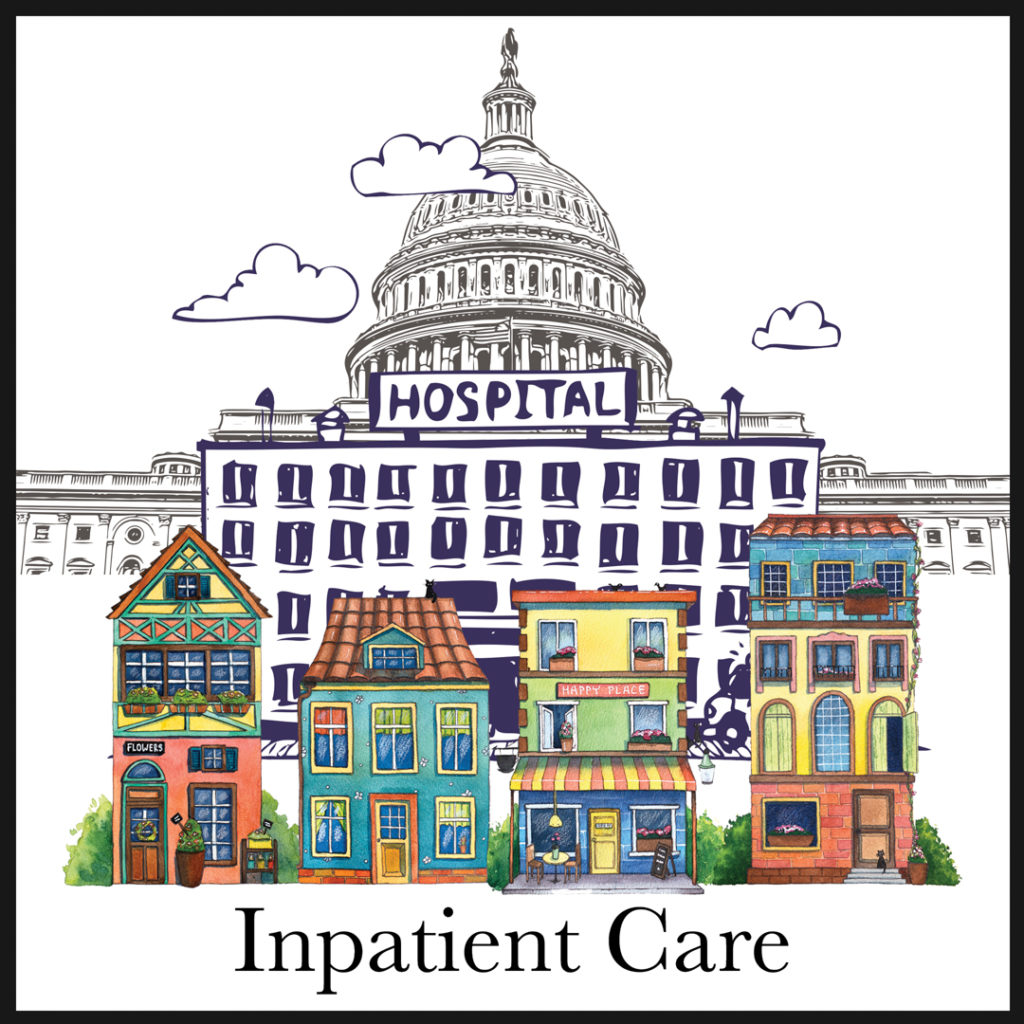
Inpatient Care Logistics
Infrastructure Loan Cost: $314 Billion covers the building of Inpatient in every Community.
INFRASTRUCTURE
- 60 beds X $1.5 million per bed = $90 Million per Hospital
- 29% of hospital stays involve using an OR = 2,517 procedures per 100,000 population, or nearly 7 per day (Remember, we have 2 Hybrid ORs at the Emergency Care – still, we will put 2 more here to be safe)
- $90 million + $6 Million = $96 million total
- 3,271 Centers X $96 Million = $314 Billion Loan Amount
HOSPITAL STAFF
- Attending physician
- Residents, interns, and medical students (house staff) (usually .32 Residents per bed)
- Specialists (usually around .54 physicians per bed)
- Registered nurses (usually 3.6 per bed)
- Licensed practical nurses (usually 1 per bed)
- Nurse practitioners and physician’s assistants (usually .3 per bed)
- Patient advocates
- Patient care technicians
- Physical therapists (usually .28 per bed)
- Occupational therapists (usually .16 per bed)
- Speech pathologists
- Hospital pharmacists (usually .2 per bed)
- Social workers
- Dietitians
- Interpreter services
- Rapid response team (often a doctor, nurse, and respiratory therapist)
- Radiologist (can do 32 procedures per day, enough for 3 of our hospitals)
- Radiology technician
- Respiratory therapist (treat breathing problems) (usually .34 per bed)
- Staff members (to help transport people within the hospital)
- Clergy
- Hospital volunteers
According to this model, employees number 12-16 per bed X $50k average salary per employee or $800k per bed. Although it seems low, the standard of $2200 per bed per day or $803,000 per bed per year is the highest quote, so we will continue to use it.
COSTS:
$803K X 60 beds = $48.2 Million per year X 3271 facilities = $157.7 Billion
Physical Rehabilitation Care
Of the 458 out of 100,000 that will need care, 42 patients are gone within a month, and 65 others have had a stroke or heart attack [circulatory system diseases] and will need nursing home rehab type care. What about the rest?
- 34 patients have social emotional issues and may need to be isolated. New Solution: admit them to Behavioral Rehab Facility.
- 205 patients have a mental disorder, need memory care. New Solution: Admit them to Memory Care Facility.
- 28 patients suffer nervous system issues like Parkinson’s. New Solution: Admit them to [Un]assisted Living Facility.
- 26 patients suffer from musculoskeletal issues (osteoarthritis). New Solution: Admit the to Unassisted / Assisted Facility.
- Many have Diabetes mellitus (9,645 per 100,000 population). New Solution: Admit the to Unassisted / Assisted Facility
STRATEGY: Once appropriate patients are admitted, they can only stay one month (another month extension granted only with doctor’s order) Next Levels: Home, Home Care, Physical Therapy, Unassisted-Assisted Care, Hospice, Behavioral Care, Memory Care
REASONS:
- Antibiotic-resistant organisms (AROs)begin to take hold
- Pneumonia from dental issues, / feeding tubes
- Urinary Tract Infection from keeping catheters in too long
- Viral and bacterial gastroenteritis, all occurring because patients remain too long in nursing homes.
CONCLUSION: Patients only get sicker the longer they stay. Rehabilitation is for getting better. If someone will not be getting better, and are not able to go home, we will use their Retirement Dividends to place them in the next best care destination, where their quality of life will be much improved.
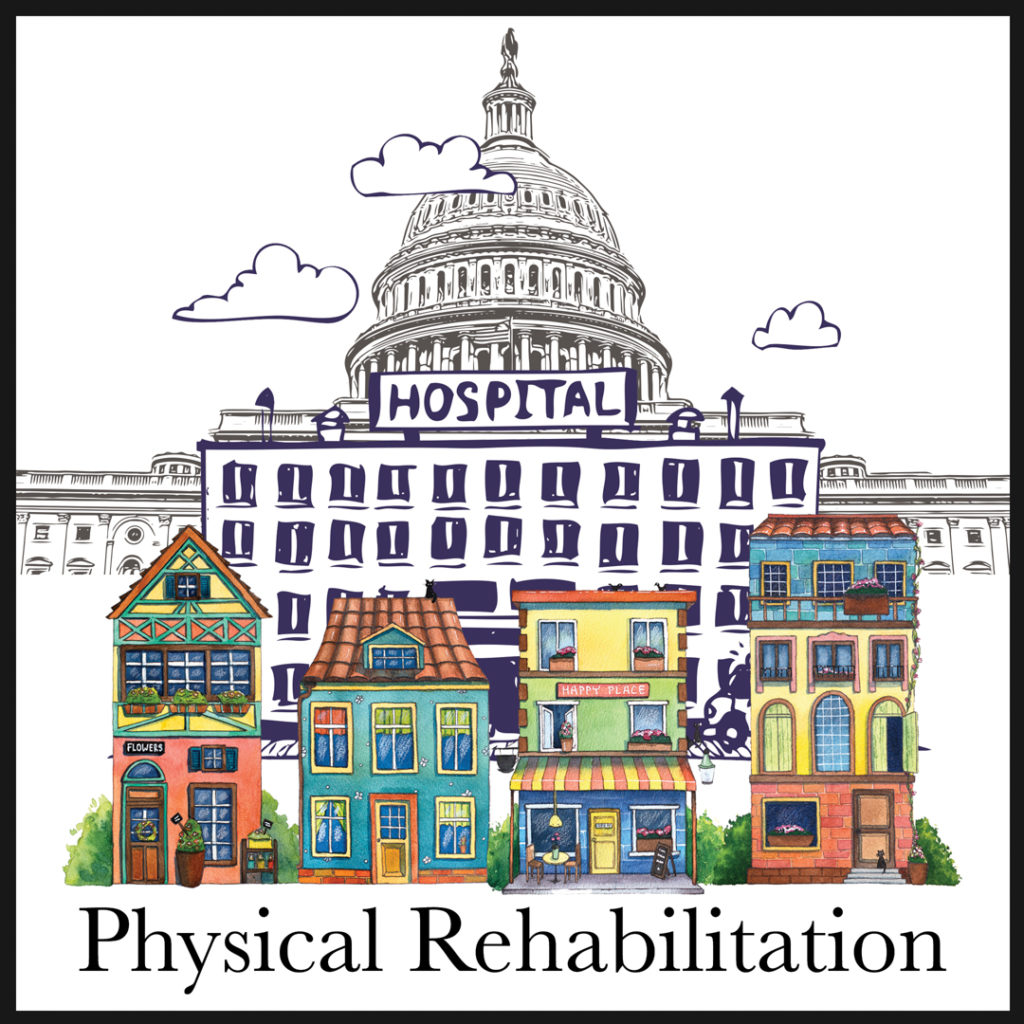
Physical Rehabilitation Care (Temporary Skilled Nursing) Logistics
Infrastructure Loan Cost: $10.5 Billion covers the building of Physical Rehabilitation in every Community.
INFRASTRUCTURE:
- 40 beds at $200 per sq. ft. [400 sq. ft. per person acceptable]
- Size: 16,000 square feet = $3.2 million to build X 3271 facilities = $10.5 billion loan, will yield $18 Billion, and cost $50.13 million a month or $601.6 million a year cost
EMPLOYEES
- 2 Physiatrists (rehabilitation doctors) ($250k)
- 2 Rehabilitation psychologists ($70k)
- 2 Registered Nurses (RN) ($105k)
- 6 Licensed Practical Nurses (LPN) ($55k)
- 24 Certified Nursing Assistants (CNA) ($40k)
- 2 Physical therapists ($90k)
- 2 Occupational Therapist ($90k)
- 2 Speech-language pathologists ($85k)
- 2 Registered dietitians ($70k)=
- 2 Respiratory therapists ($70k)
- 2 Medical social workers ($65k)
- 2 Recreational therapists ($60k)
- 4 Administration Teams ($110k)
TOTAL SALARIES = $3.64 Million X 3271 facilities = $11.9 Billion
COSTS: 40% of $11.9 Billion = $4.8 Billion
Independent / Assisted Care
- Diabetes: 132 patients a year X 2 yrs = 264 potential patients
- Parkinson’s: 28 patients X 2 yrs [?] = 56 potential patients
- Osteoarthritis: 26 patients X 2 yrs [? ] = 52 potential patients
STRATEGY:
Transfer to this facility (or to Memory Care, or Hospice) means we will tap into all Retirement Dividends to help shoulder the cost. Numbers suggest a 200-bed facility needed in every Community
HOME HEALTH: Nursing staff can cover 3 hours / day within the local Community if keeping patient at home is a viable option – care above 3-hour maximum will incur an hourly fee. This extra pay will go directly to the “caregiver”. Possible plan: caregivers work 3 hours a day taking care of 6 people at the facility, then go into the Community for 3 hours of Home Care [maximum 30-hour week]
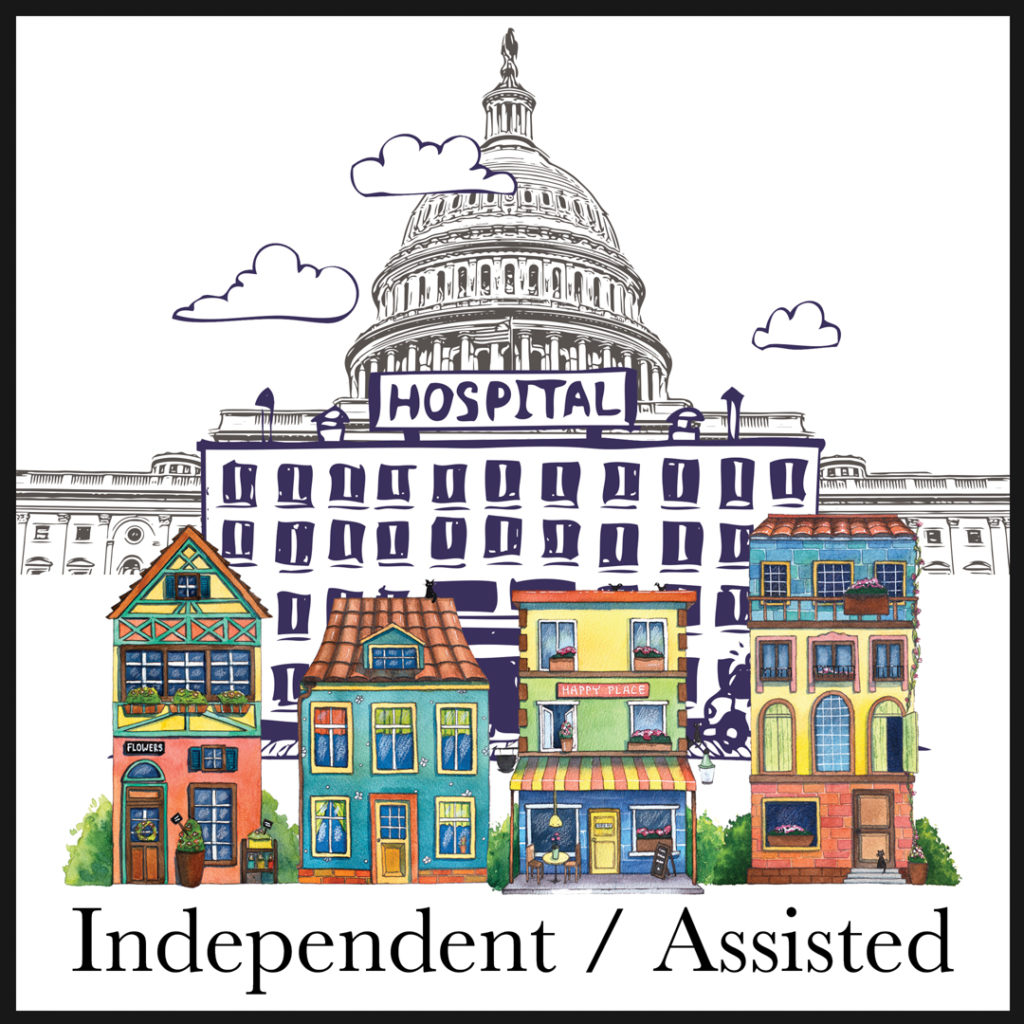
Independent / Assisted Care Logistics
Infrastructure Loan Cost: $57.6 Billion covers the building of Independent and Assisted Care in every Community.
INFRASTRUCTURE
200 bed residential facility = $220 per sq. ft. X 400 sq. ft. X 200 residents = $17.6 million X 3271 Facilities = $57.6 Billion
STAFF
There is no actual requirement for the numbers of staff on duty, but the recommendation is 72 staff on main shift for 200 residents. With new 30-hour work weeks, we would need 216 staff to cover the daytime, and another 24 to cover the night shifts. Nursing homes must provide at least 3.2 hours of nursing care per day per resident. At 30 hour-a-week shifts, 150 of the staff will need to be nurses.
- [1] Administrator / Facility Director ($80k)
- [1] Medical Director ($80k)
- [1] Director of Nursing ($80k)
- [1] Admissions Coordinator ($75)
- [2] Housekeeping Coordinators ($50k)
- [2] Dining Coordinators ($50k)
- [2] Activity Directors ($90k)
- [12] Physical Therapists (Activity Coordinators) ($90k)
- Nursing Staff [150 total]
- [20] registered nurses ($100k)
- [20] licensed practical nurses ($55)
- [40] certified nursing assistants [CNAs] ($40k)
- [70] personal care technicians ($35k)
- [12] Housekeeping Staff ($28k)
- [12] Custodial Staff ($28k)
- [12] Dining Staff ($28k)
- [4] Administrative Staff ($40k)
TOTAL SALARIES = $8.9 million
(Round up to) $9 million – $6 million in Retirement Dividends = $3 million X 3271 Facilities = $9.82 Billion
OPERATING COSTS: two different estimates claim $3.6 million in expenses per year X 3271 facilities = $11.8 Billion
HOME HEALTH: Nursing staff is required to spend some of their hours in the local community as well. We will offer 3 hours a day to the surrounding area, and if people want more care, they will then need to pay for it by the hour (we would only be on the hook for 21 hours). This extra pay will go directly to the nurses who wish to work past their mandatory number of hours per week. (For the initial 3 hour visits we will likely apply the $20 copay)
Possible plan: some caregivers could work 3 hours a day taking care of 6 people at the facility, then go out in community and give an individual 3 hours at their home every day, for a maximum 42-hour week.
Memory Care
Built into every Community, Memory Care will enable staff to visit and provide care at home in special situations, too, if preferred. Another important service: keeping extra rooms available for “stay at home” patients, who may need temporary housing if family members are away. This service will also be for “day visits”, too. Right now: 5.7 million [or 1743 per 100,000] have dementia. Projected: 16 million [or 4891 per 100,000] CONCLUSION: we better find a cure soon. (This is why We are investing in the cure. See Our R & D Division.)
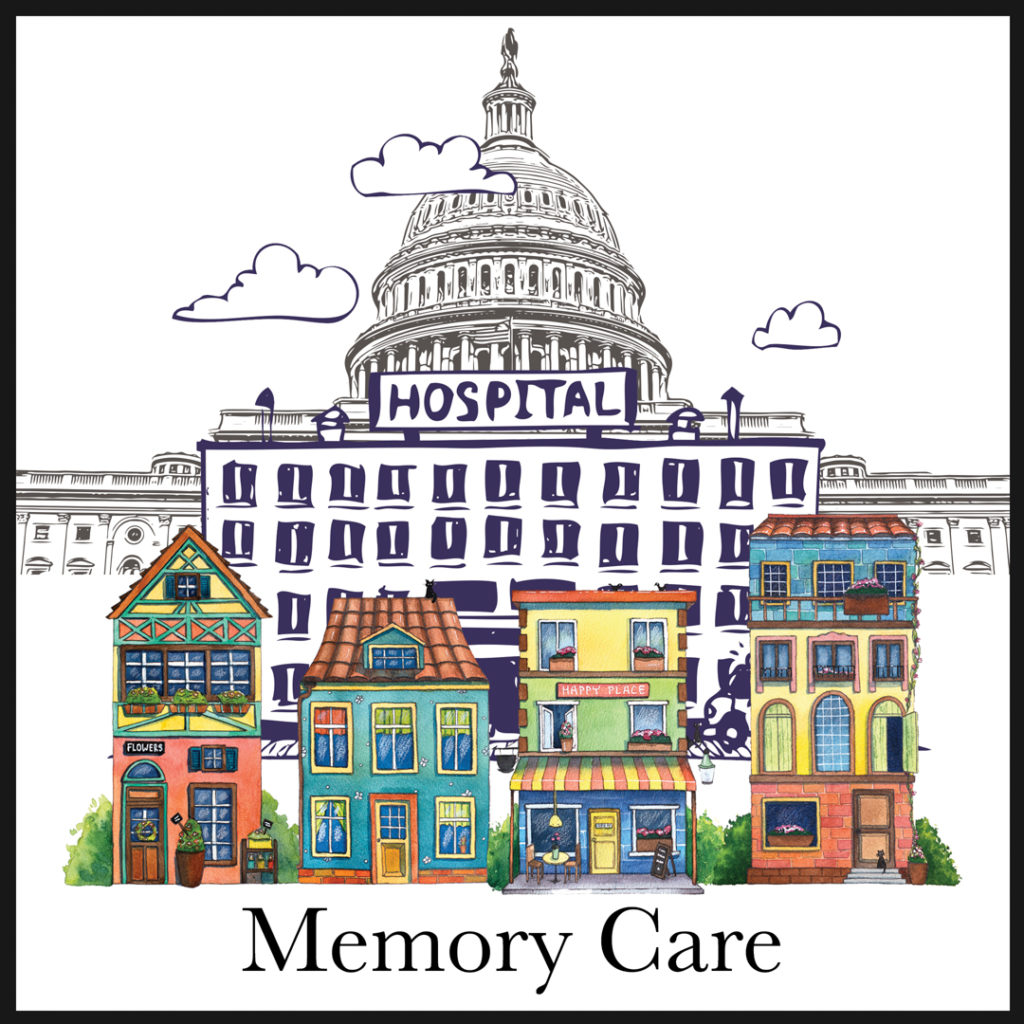
Memory Care Logistics
Infrastructure Loan Cost: $654 Billion covers the building of Memory Care in every Community.
PLAN
If a person decides to live in our Memory Care Facility, we will transfer all of their Retirement Dividend (approximately $2500 a month)
We may be servicing 1,743 patients per 100,000 population.
Building a facility runs nearly $310 per square foot. Studios are typically 370 sq. ft., and perhaps $115,000 to build. At this rate, it would cost $200 million to build for 1743 residents.
INFRASTRUCTURE
$200 million per residence X 3,271 = $654 Billion; this would yield $1.13 trillion in 30 years – will need $3.1 Billion a month mortgage, or $37.5 Billion a year.
STAFF
- 2500 possible workers X $40,000 average salary = $100 million / yr
- We will use each individual’s Retirement Dividend to help pay for the caregivers (approximately $30,000 per year X 1743 patients) = $59.3 Million / yr
- Subtracting the $60 Million in Retirement Dividends leaves $40 Million / yr in salaries X 3271 Facilities = $130.84 Billion
NOTES:
- We will be investing in some form of cure. (See R & D)
- For individuals who remain at home, families will need caregiving, nurse visits, doctor (Paramedic?) visits, and eventually, hospice visits.
Hospice Care / Pain Treatment Center Logistics
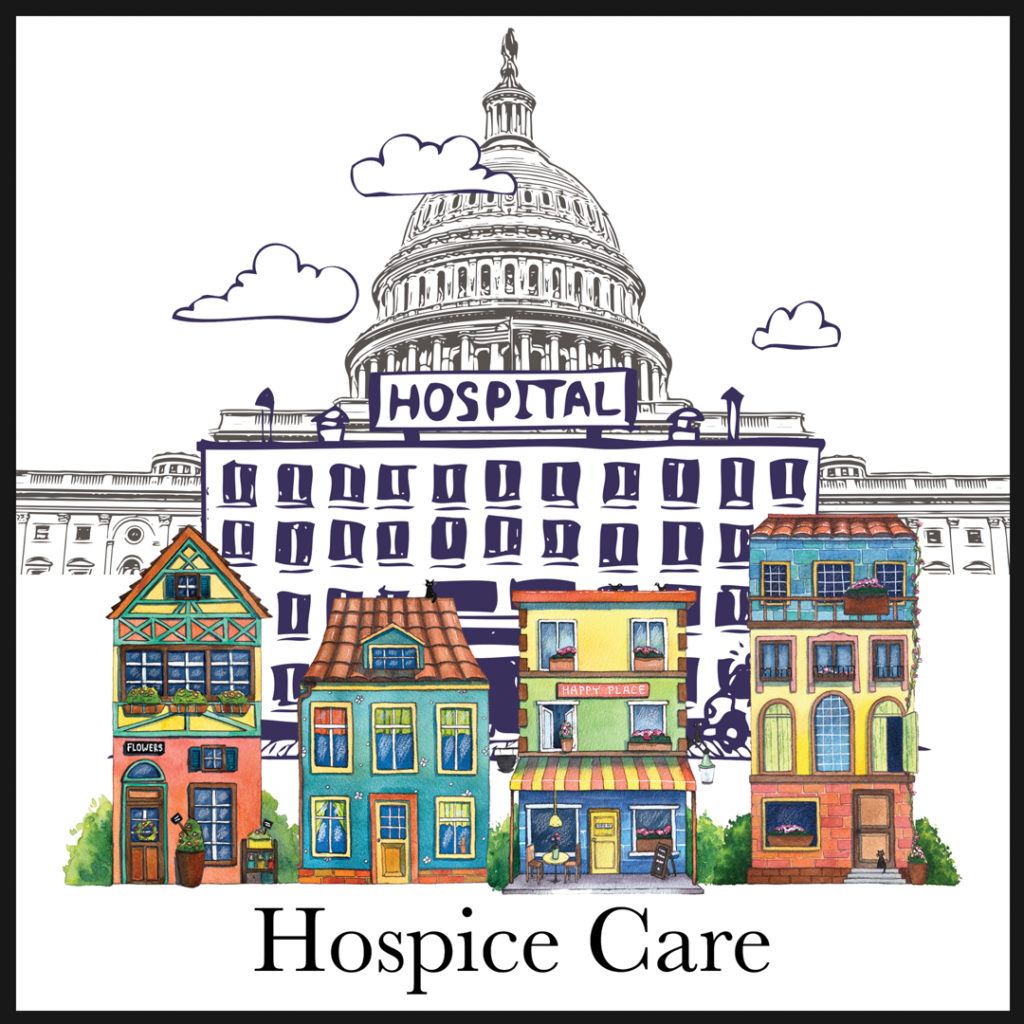
Between 500 and 600 people per 100,000 die drawn out deaths each year from cancer, heart disease, dementia, diabetes, etc. (many of these are not even in a facility). 86% of Americans prefer to die at home, and 66% did receive care in their own home; only 27.4% received care at an inpatient facility.
Infrastructure Loan Cost: $11.52 Billion covers the cost of Pain Treatment in every Community.
INFRASTRUCTURE
40 beds X 400 square feet X $220 per sq. ft. = $3.52 Million X 3271 facilities = $11.52 Billion Loan
STAFF
If we make Teams of 4 “caregivers”, in those last several days, families will have several faces they know, any of who could be there at the end. There could be as many as 14 deaths in a week. We will make 7 Teams to start, and send them into our facilities as well, though covering the community at large is their first priority.
- 1 Medical Director ($80k)
- 4 Administrative Staff ($40k)
- 7 Hospice Care Coordinators ($50k)
- 7 Registered Nurses ($100k)
- 7 Certified Nurses Assistants ($40k)
- 7 Social Workers / Counselors ($60k)
TOTAL = $2 million X 3271 facilities = $6.6 Billion
OPERATING COSTS: 40% X $6.6 Billion = $2.6 Billion – may not ask these “stay-at-home” patients for their full Retirement Dividend, though some compensation will be needed.
Stats:
- Between 500 and 600 people per 100,000 population die more drawn-out deaths each year, from cancer, heart disease, dementia, diabetes, etc., (and many of these are not even in a facility)
- 86% of Americans prefer to die at home. In reality, 66 percent received care at their own home. Only 27.4 percent received care at an inpatient facility.
- 40.5 percent of hospice admissions are patients older than age 85. However, patients aged 65-84 years made up an astonishing 44 percent.
- 54.7 percent of full-time employees in hospices are registered nurses. Only 35.7 percent of employees are aides.
“At its best, hospice provides a well-coordinated interdisciplinary team that eases patients’ pain and worry, tending to the whole family’s concerns.” (We need to live up to this standard for every citizen). Typically, Hospice is for critically ill patients expected to die within six months who agree to forego curative treatment. The care is focused on comfort instead of aggressive medical interventions that can lead to unpleasant, drawn-out hospital deaths. The mission of Hospice has been to offer peaceful, holistic care and to leave patients and their loved ones in control at the end of life.
OBSERVATIONS:
There have been mishaps with Hospice Care, where patients are transitioning, and Hospice is not available at that exact moment. Death is on Its own timetable, but our Hospice needs to be thorough, and know what is most important to all involved, and through our accumulated experience, make sure we have planned for all contingencies.
A community coming together around a family would be preferable to some paid stranger. Being there before the end also seems preferable to showing up to some service after the fact.
A community should relieve the family from the burden of organizing the service. A portion of the patient’s retirement fund can be used to pay for all funeral and burial expenses. The Community Center could at least volunteer to hold the service.
People go when they are ready to go, but while they still have some fight left, we should fight with them. Life itself is a fight. What is the point of any of it if we allow someone else to decide when we should stop fighting?
TAKEAWAYS:
- Assign a staff of people to the job of providing Hospice Care.
- Medical Director – Makes short-term inpatient care available when pain or symptoms become too difficult to manage at home, or the caregiver needs respite time, and delivers special services like speech and physical therapy when needed.
- Hospice Coordinator – works for family, providing information and options, makes all necessary arrangements based on family wishes.
- Nursing care – Manages the patient’s pain and symptoms, provides needed drugs, medical supplies and other equipment.
- Social Worker – Assists the patient with the emotional, psychosocial and spiritual aspects of dying.
- Health Aide – provides care, coaches the family on how to care for the patient.
- Spiritual Counselor – Provides bereavement care and counseling to surviving family and friends
- Secure each individual’s final wishes (which only they can change at any time) and from now on, there is no need to “forego curative treatment” – if you are under Our care, We’ve got you covered, if We are asked by you or your family for help, We will be glad to step in as well.
- In all of our facilities (Memory Care, Assisted Living), the people already helping at risk patients need to be able to help in that patient’s transition when the time comes, because there is a relationship built with the patient already – this needs to be part of the caregiver’s job, for which they will train.
STRATEGY: Build a Pain Treatment Center. This is purely for respite care (temporary help for families to have a break). We will have 40 beds available. NOTE: This is not a place of Death, but a place of Life. Volunteers are welcome. Our schools will have some

